Fotografía de página completa.pdf
00.pdf
Preface
Contents
01.pdf
Time Series Data
Purpose
Time series
R language
Plots, trends, and seasonal variation
A flying start: Air passenger bookings
Unemployment: Maine
Multiple time series: Electricity, beer and chocolate data
Quarterly exchange rate: GBP to NZ dollar
Global temperature series
Decomposition of series
Notation
Models
Estimating trends and seasonal effects
Smoothing
Decomposition in R
Summary of commands used in examples
Exercises
02.pdf
Correlation
Purpose
Expectation and the ensemble
Expected value
The ensemble and stationarity
Ergodic series*
Variance function
Autocorrelation
The correlogram
General discussion
Example based on air passenger series
Example based on the Font Reservoir series
Covariance of sums of random variables
Summary of commands used in examples
Exercises
03.pdf
Forecasting Strategies
Purpose
Leading variables and associated variables
Marine coatings
Building approvals publication
Gas supply
Bass model
Background
Model definition
Interpretation of the Bass model*
Example
Exponential smoothing and the Holt-Winters method
Exponential smoothing
Holt-Winters method
Four-year-ahead forecasts for the air passenger data
Summary of commands used in examples
Exercises
04.pdf
Basic Stochastic Models
Purpose
White noise
Introduction
Definition
Simulation in R
Second-order properties and the correlogram
Fitting a white noise model
Random walks
Introduction
Definition
The backward shift operator
Random walk: Second-order properties
Derivation of second-order properties*
The difference operator
Simulation
Fitted models and diagnostic plots
Simulated random walk series
Exchange rate series
Random walk with drift
Autoregressive models
Definition
Stationary and non-stationary AR processes
Second-order properties of an AR(1) model
Derivation of second-order properties for an AR(1) process*
Correlogram of an AR(1) process
Partial autocorrelation
Simulation
Fitted models
Model fitted to simulated series
Exchange rate series: Fitted AR model
Global temperature series: Fitted AR model
Summary of R commands
Exercises
05.pdf
Regression
Purpose
Linear models
Definition
Stationarity
Simulation
Fitted models
Model fitted to simulated data
Model fitted to the temperature series (1970--2005)
Autocorrelation and the estimation of sample statistics*
Generalised least squares
GLS fit to simulated series
Confidence interval for the trend in the temperature series
Linear models with seasonal variables
Introduction
Additive seasonal indicator variables
Example: Seasonal model for the temperature series
Harmonic seasonal models
Simulation
Fit to simulated series
Harmonic model fitted to temperature series (1970--2005)
Logarithmic transformations
Introduction
Example using the air passenger series
Non-linear models
Introduction
Example of a simulated and fitted non-linear series
Forecasting from regression
Introduction
Prediction in R
Inverse transform and bias correction
Log-normal residual errors
Empirical correction factor for forecasting means
Example using the air passenger data
Summary of R commands
Exercises
06.pdf
Stationary Models
Purpose
Strictly stationary series
Moving average models
MA(q) process: Definition and properties
R examples: Correlogram and simulation
Fitted MA models
Model fitted to simulated series
Exchange rate series: Fitted MA model
Mixed models: The ARMA process
Definition
Derivation of second-order properties*
ARMA models: Empirical analysis
Simulation and fitting
Exchange rate series
Electricity production series
Wave tank data
Summary of R commands
Exercises
07.pdf
Non-stationary Models
Purpose
Non-seasonal ARIMA models
Differencing and the electricity series
Integrated model
Definition and examples
Simulation and fitting
IMA(1, 1) model fitted to the beer production series
Seasonal ARIMA models
Definition
Fitting procedure
ARCH models
S&P500 series
Modelling volatility: Definition of the ARCH model
Extensions and GARCH models
Simulation and fitted GARCH model
Fit to S&P500 series
Volatility in climate series
GARCH in forecasts and simulations
Summary of R commands
Exercises
08.pdf
Long-Memory Processes
Purpose
Fractional differencing
Fitting to simulated data
Assessing evidence of long-term dependence
Nile minima
Bellcore Ethernet data
Bank loan rate
Simulation
Summary of additional commands used
Exercises
09.pdf
Spectral Analysis
Purpose
Periodic signals
Sine waves
Unit of measurement of frequency
Spectrum
Fitting sine waves
Sample spectrum
Spectra of simulated series
White noise
AR(1): Positive coefficient
AR(1): Negative coefficient
AR(2)
Sampling interval and record length
Nyquist frequency
Record length
Applications
Wave tank data
Fault detection on electric motors
Measurement of vibration dose
Climatic indices
Bank loan rate
Discrete Fourier transform (DFT)*
The spectrum of a random process*
Discrete white noise
AR
Derivation of spectrum
Autoregressive spectrum estimation
Finer details
Leakage
Confidence intervals
Daniell windows
Padding
Tapering
Spectral analysis compared with wavelets
Summary of additional commands used
Exercises
10.pdf
System Identification
Purpose
Identifying the gain of a linear system
Linear system
Natural frequencies
Estimator of the gain function
Spectrum of an AR(p) process
Simulated single mode of vibration system
Ocean-going tugboat
Non-linearity
Exercises
11.pdf
Multivariate Models
Purpose
Spurious regression
Tests for unit roots
Cointegration
Definition
Exchange rate series
Bivariate and multivariate white noise
Vector autoregressive models
VAR model fitted to US economic series
Summary of R commands
Exercises
12.pdf
State Space Models
Purpose
Linear state space models
Dynamic linear model
Filtering*
Prediction*
Smoothing*
Fitting to simulated univariate time series
Random walk plus noise model
Regression model with time-varying coefficients
Fitting to univariate time series
Bivariate time series -- river salinity
Estimating the variance matrices
Discussion
Summary of additional commands used
Exercises
13.pdf
References
Index
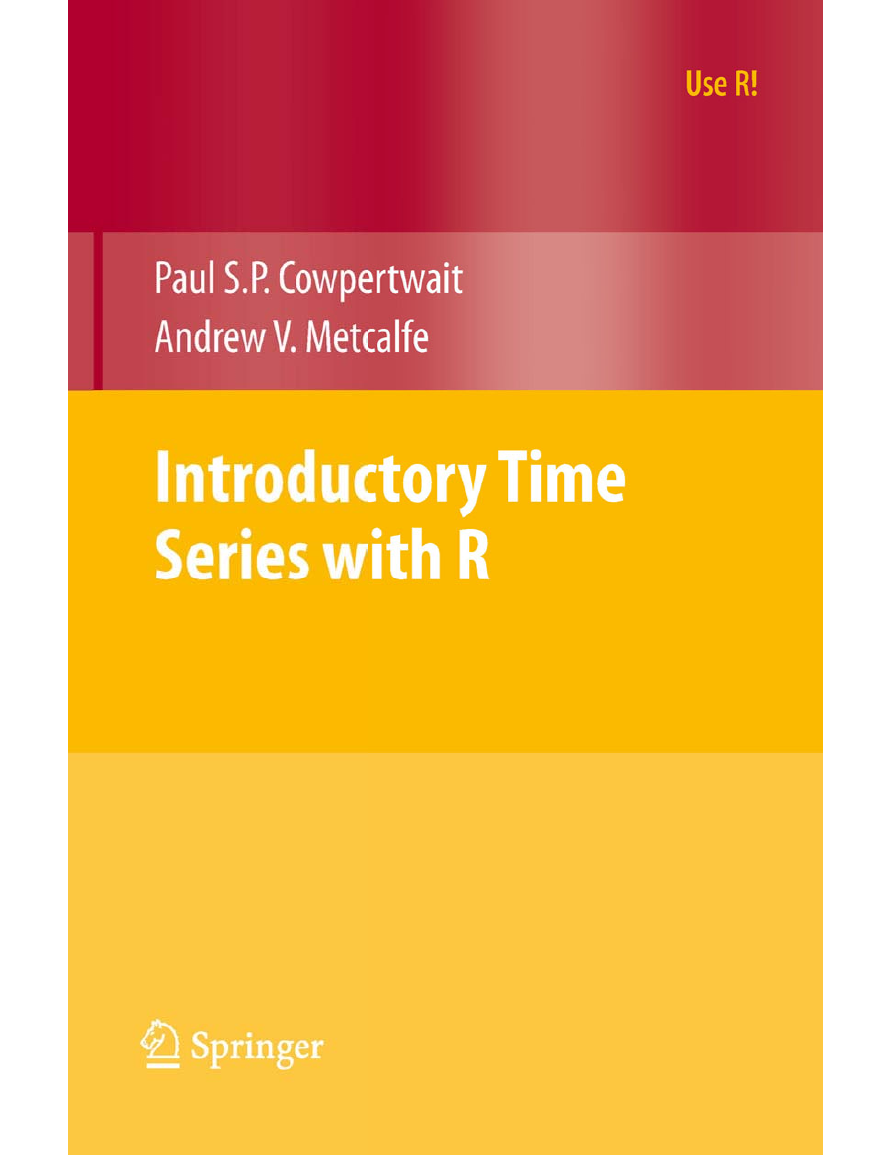
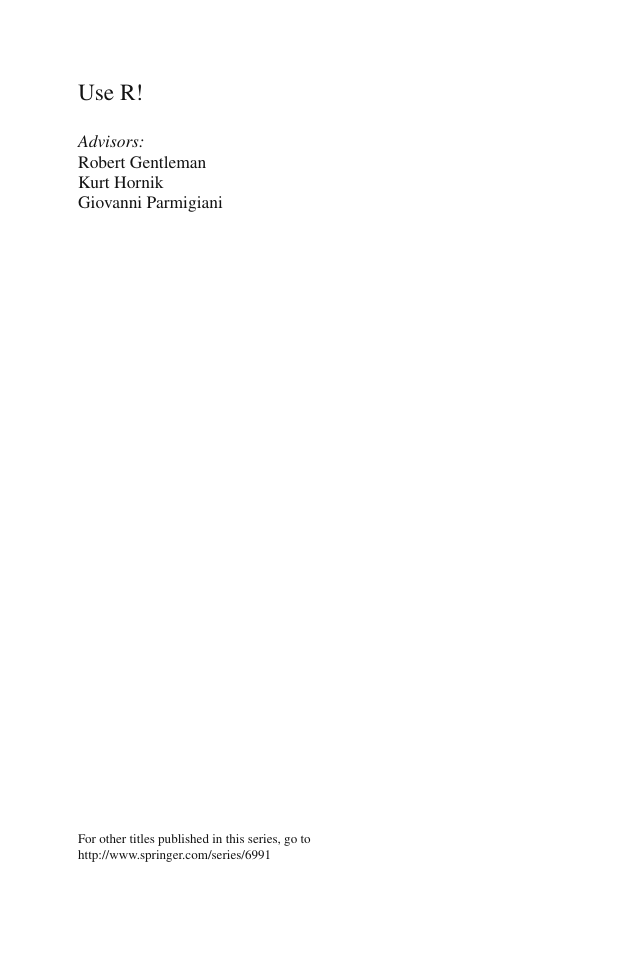
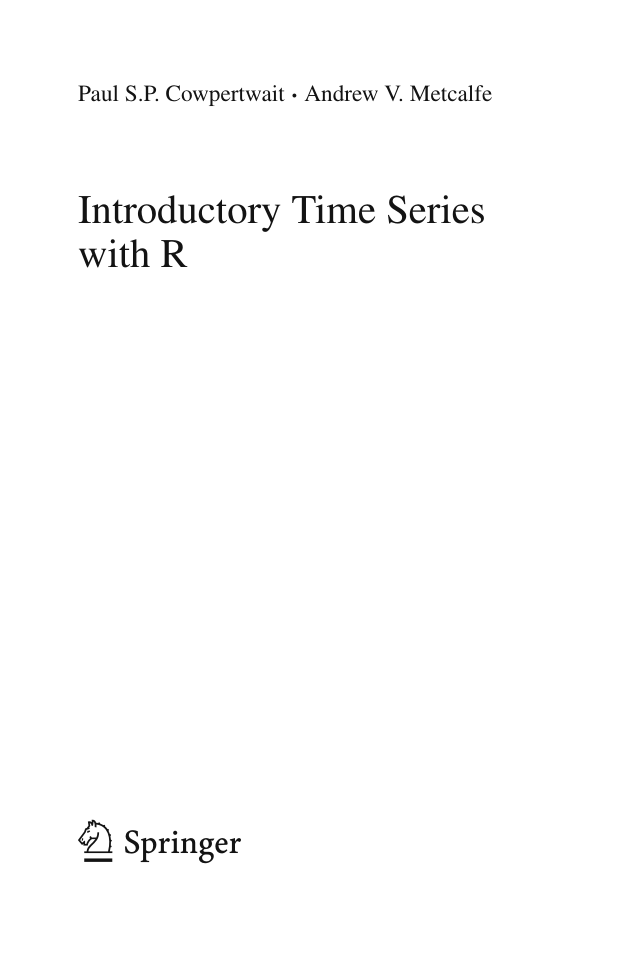
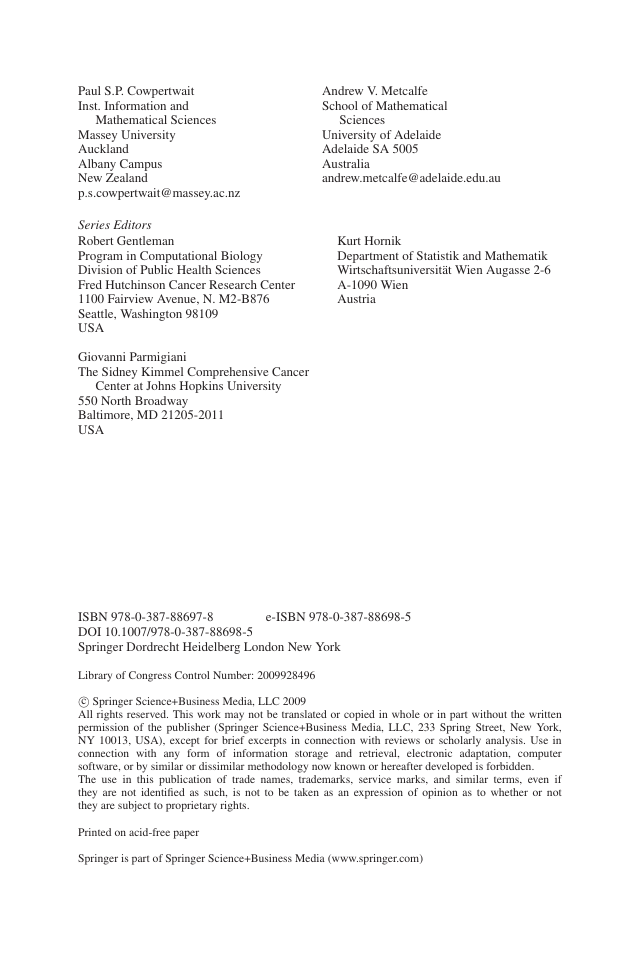
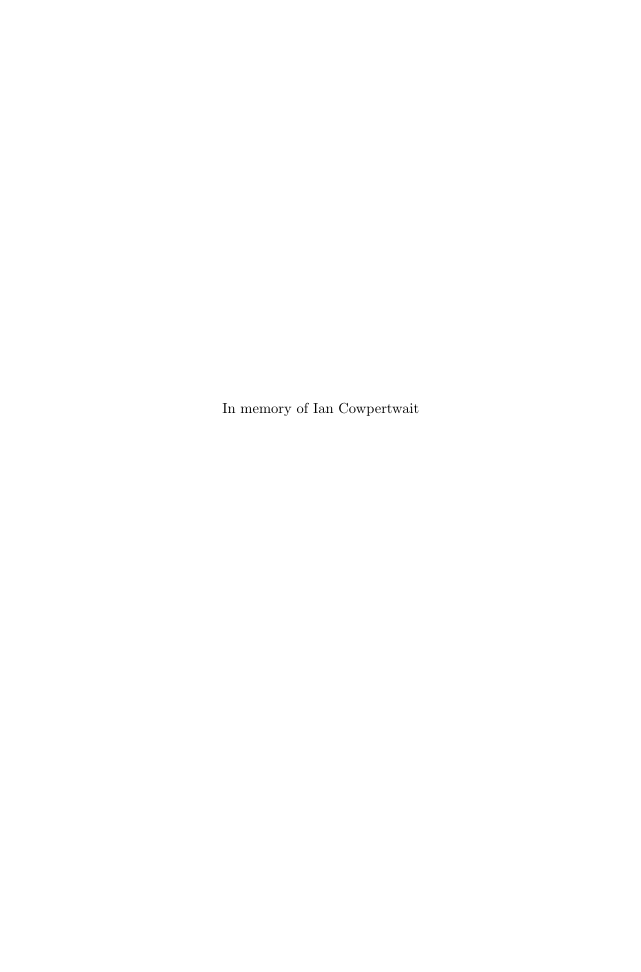
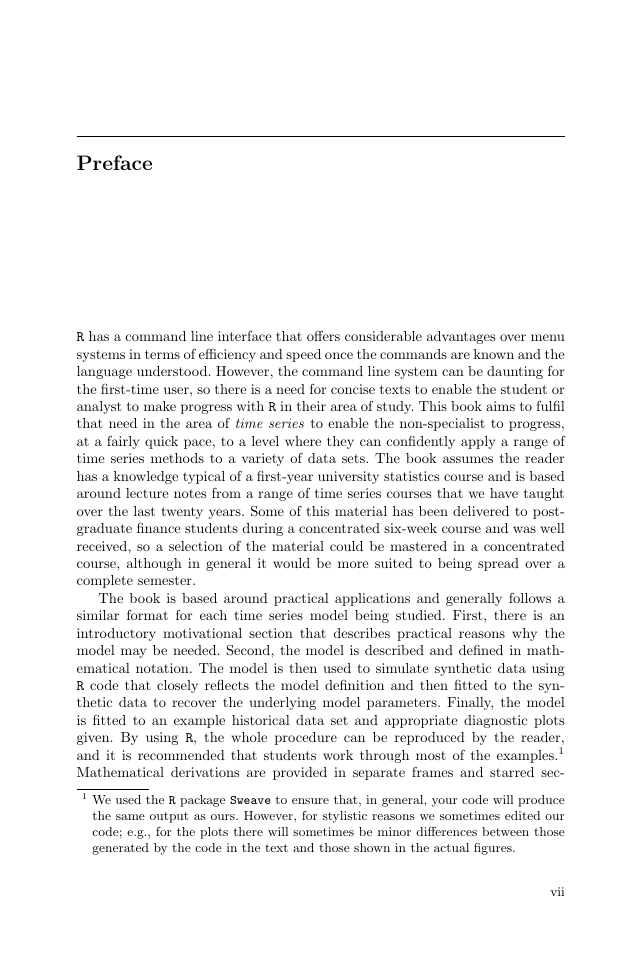
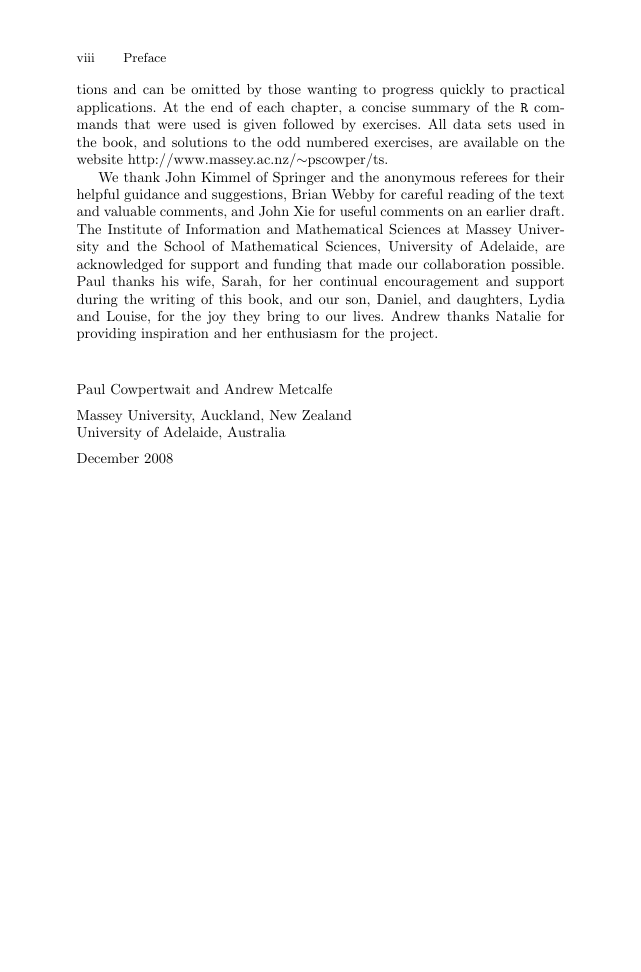
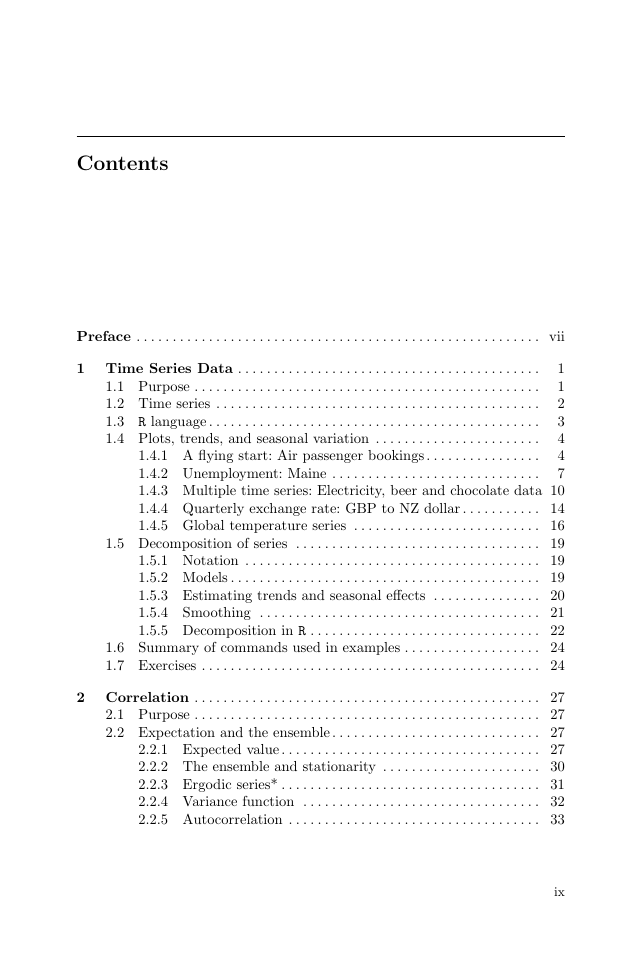








 2023年江西萍乡中考道德与法治真题及答案.doc
2023年江西萍乡中考道德与法治真题及答案.doc 2012年重庆南川中考生物真题及答案.doc
2012年重庆南川中考生物真题及答案.doc 2013年江西师范大学地理学综合及文艺理论基础考研真题.doc
2013年江西师范大学地理学综合及文艺理论基础考研真题.doc 2020年四川甘孜小升初语文真题及答案I卷.doc
2020年四川甘孜小升初语文真题及答案I卷.doc 2020年注册岩土工程师专业基础考试真题及答案.doc
2020年注册岩土工程师专业基础考试真题及答案.doc 2023-2024学年福建省厦门市九年级上学期数学月考试题及答案.doc
2023-2024学年福建省厦门市九年级上学期数学月考试题及答案.doc 2021-2022学年辽宁省沈阳市大东区九年级上学期语文期末试题及答案.doc
2021-2022学年辽宁省沈阳市大东区九年级上学期语文期末试题及答案.doc 2022-2023学年北京东城区初三第一学期物理期末试卷及答案.doc
2022-2023学年北京东城区初三第一学期物理期末试卷及答案.doc 2018上半年江西教师资格初中地理学科知识与教学能力真题及答案.doc
2018上半年江西教师资格初中地理学科知识与教学能力真题及答案.doc 2012年河北国家公务员申论考试真题及答案-省级.doc
2012年河北国家公务员申论考试真题及答案-省级.doc 2020-2021学年江苏省扬州市江都区邵樊片九年级上学期数学第一次质量检测试题及答案.doc
2020-2021学年江苏省扬州市江都区邵樊片九年级上学期数学第一次质量检测试题及答案.doc 2022下半年黑龙江教师资格证中学综合素质真题及答案.doc
2022下半年黑龙江教师资格证中学综合素质真题及答案.doc